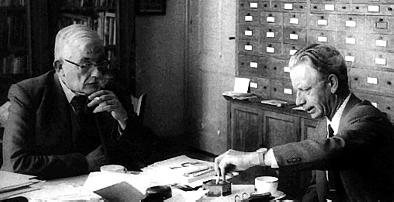Albert Jan Kluyver
When Kluyver took over from Beijerinck as Professor in 1921, he modernised the research in the Laboratory. Especially, he emphasized the importance of working with industry.
His close ties to Gist brocades (the Yeast and Spirits Factory) meant that he was one of the people involved in their secret production of penicillin (Bacinol) during World War 2.
Unity in Biochemistry
One of Kluyver’s most important discoveries was that biochemistry is more or less the same in all cells. In cells, chains of enzymes carry out chemical reactions in little steps which might (for example) produce energy by breaking down carbohydrates or build proteins and other tissues.
These enzyme chains and their connections, known as biochemical pathways, are similar if their job is similar, no matter what organism they are in. For example, the pathway for breaking down glucose to CO2 is virtually the same (allowing for changes over time) in elephants, insects or yeasts. Kluyver called this Unity in Biochemistry. Before this discovery, people thought that every form of life was different from every other form, and each one needed to be studied separately.
Research methods to the USA
His former student and lifelong friend was C.B. van Niel (figure 3). He invented the term “Delft School of Microbiology” and took Kluyver and Beijerinck’s research methods to the USA.

Figure 3. Kluyver (left) and Van Niel (right) during their last meeting in Delft.

